Growing okra in the vegetable garden nets a harvest as well as beautiful blooms. The good looking plant can hold its own in a front yard garden. The fruit is delicious baked or pickled!
For more crops that are front yard friendly, read this.
Contributed by Jodi Torpey, author and Master Gardener.
Home gardeners are in for a surprise the first time they plant and grow okra: the flowers look like beautiful hollyhock blooms.
Plus, okra is also an essential vegetable for gumbo lovers everywhere.
Introduction to Growing Okra
Okra (Abelmoschus esculentus), a member of the mallow family, grows as a perennial plant in tropical areas, but it’s grown as a warm-season annual in other, cooler regions of the country.
Grow Some Greens!
Ready to grow fresh greens, no matter WHERE you live? Sign up for my
FREE quick-start guide and start growing some of your own food!
The okra flowers and then pods form on fast-growing plants that can reach 6 feet tall. Pods are long, ribbed and tapered at one end. They can be green or red, depending on the variety.
Red pods are an attractive ornamental feature although they may fade or turn green with cooking.
If growing okra in a cold-weather climate, select varieties with the shortest number of days to maturity. Here are a few of the many green and red okra varieties to choose from:
Green Okra Pods
Baby Bubba is a pint-size variety that grows to 3-4 feet tall, perfect for containers or small gardens; around 53 days to maturity.
Clemson Spineless is an All-America Selections winner with smooth spineless pods that grow on plants about 4 feet tall; 55-60 days.
Emerald is an old-fashioned heirloom with round, dark green pods that grow on 6-foot-tall plants; 60 days.
New to gardening? Limited on space? The 5-Gallon Garden gives you the skills you need to grow food in the space you have. Get started with your garden today!
Red Okra Pods
Burgundy is an heirloom variety with attractive red stems and pods on 5-foot tall plants; 50-60 days to maturity.
Hill Country Red is an heirloom variety that grows long pods on 6-foot plants; 64 days.
Red Velvet is a compact 5-foot tall plant for containers and small gardens; 55-60.
Growing Okra from Seeds or Transplants
You can plant okra from seeds or transplants, depending on how quickly you want to get growing. If you’re in a more northerly, cooler climate, wait until all danger of frost has passed and the soil has warmed to at least 60 degrees before planting seeds or okra transplants.
Here’s how to germinate heat loving seeds in your Instant Pot!
Planting Okra Seeds
Start seeds indoors 3-4 weeks before transplanting or direct sow in the garden. When planting from seeds, soaking them overnight helps with sprouting
You can also direct sow seeds in the garden by planting them ½ inch deep, and space about 2 inches apart in the row. The space between rows depends on the type of okra you planted. For smaller (dwarf) varieties, you’ll need at least 24 inches between rows; tall, spreading varieties may need as much as 60 inches between rows.
If planting okra transplants, space plants about 6-12 inches apart (dwarf varieties) or 24 (or more) inches apart for taller varieties, but be sure to follow the planting instructions for the variety you’ve chosen.
Set up a watering system at planting time, either drip irrigation or a soaker hose. Once plants start to grow, add an organic mulch (like straw) to help maintain soil moisture and keep down weeds.
If you planted from seeds, you’ll need to thin plants as they start to grow and allow space for good air circulation to prevent problems as they grow.
Requirements for Growing Okra
Light requirements
Because okra is a tropical plant, choose a full sun spot for planting. Okra loves hot weather and plants can take off quickly.
Soil needs
Okra is the kind of plant that prefers a fertile, well-drained soil. Amend the garden bed with high-quality compost or other organic soil amendment before planting.
Fertilize with a balanced (10-10-10) organic fertilizer right after thinning seedlings and when you see okra pods start to form. Sprinkle the dry fertilizer on top of the soil about 6-8 inches away from the base of the plants; rake in and water.
Water requirements
Water deeply to ensure good moisture to encourage deep roots. Okra plants need consistent moisture to grow and set pods, so plan on a deep watering at least once a week, especially if the weather is dry. Mulching around plants will help regulate soil temperature and hold in moisture.
Combating Pests and Other Problems
Weeds may be the top garden pest for okra until plants start to grow up and out. Pull weeds by hand to preserve the roots and then mulch to prevent weeds from sprouting.
Inspect plants every few days to look for curled leaves, a sign of aphids. Use strong blasts of a garden hose over and under leaves to wash them away.
Holes in leaves could mean plants are under attack from corn earworms or cabbage loopers. Look closely to find these worms, hand pick and dispose of them in a bucket of soapy water.
Powdery mildew is a fungal disease that shows up as a white coating on okra leaves when humidity is high and there’s not enough room between plants for air to circulate. Prevent powdery mildew with wide spacing between plants. If you see white spots start to form on leaves, clip them off and dispose of them.
A common issue with okra is when plants flower, but don’t produce pods because of poor pollination, too much nitrogen fertilizer, lack of enough sunlight, not enough water or big temperature fluctuations. Wait for temperatures to stabilize, reduce fertilizer applications and be sure to give plants enough water.
Growing Okra in Containers
Choose an okra variety that’s meant to grow in small spaces, such as a dwarf or compact variety like Baby Bubba, Annie Oakley or Blondy. Choose at least a 5-gallon container or plant in a half barrel to match the size of the mature plant to the size of the container. Fill containers with a good quality potting soil.
Plant 1 okra transplant or 3-5 seeds in the container and thin to the strongest one. Plants in containers will dry out quickly so water several times a week during hot weather and apply a balanced fertilizer about once a month.
Harvesting Okra for Cooking
Keep a close eye on the okra pods when they start to form because they’ll be ready to clip from plants as soon as they’re firm, brightly colored and about 3-4 inches long (or longer depending on the variety).
Some okra varieties have pods with sharp spines, so protect your hands with gloves when picking them. Harvest pods sooner rather than later by using clippers to cut pods where they join between the main stem and stalk of the leaf. Okra plants with pods left on too long will stop flowering and producing.
Using Fresh Okra
Prepare fresh okra as soon as possible after harvesting for best flavor or refrigerate for a few days.
Plan ahead for making the most of your okra harvest with recipes for frying, baking, stir frying, stewing, pickling, freezing, or drying. When cooked, the pods release a slightly slippery substance that helps thicken gumbo and other Southern recipes.
Propagating or Saving Okra Seeds
Seed saving is easy with okra, just leave some of the last pods of the season on the plant until they’re overgrown and swell with seeds. Let pods dry and then remove seeds to store in a cool dry place until the next gardening season.

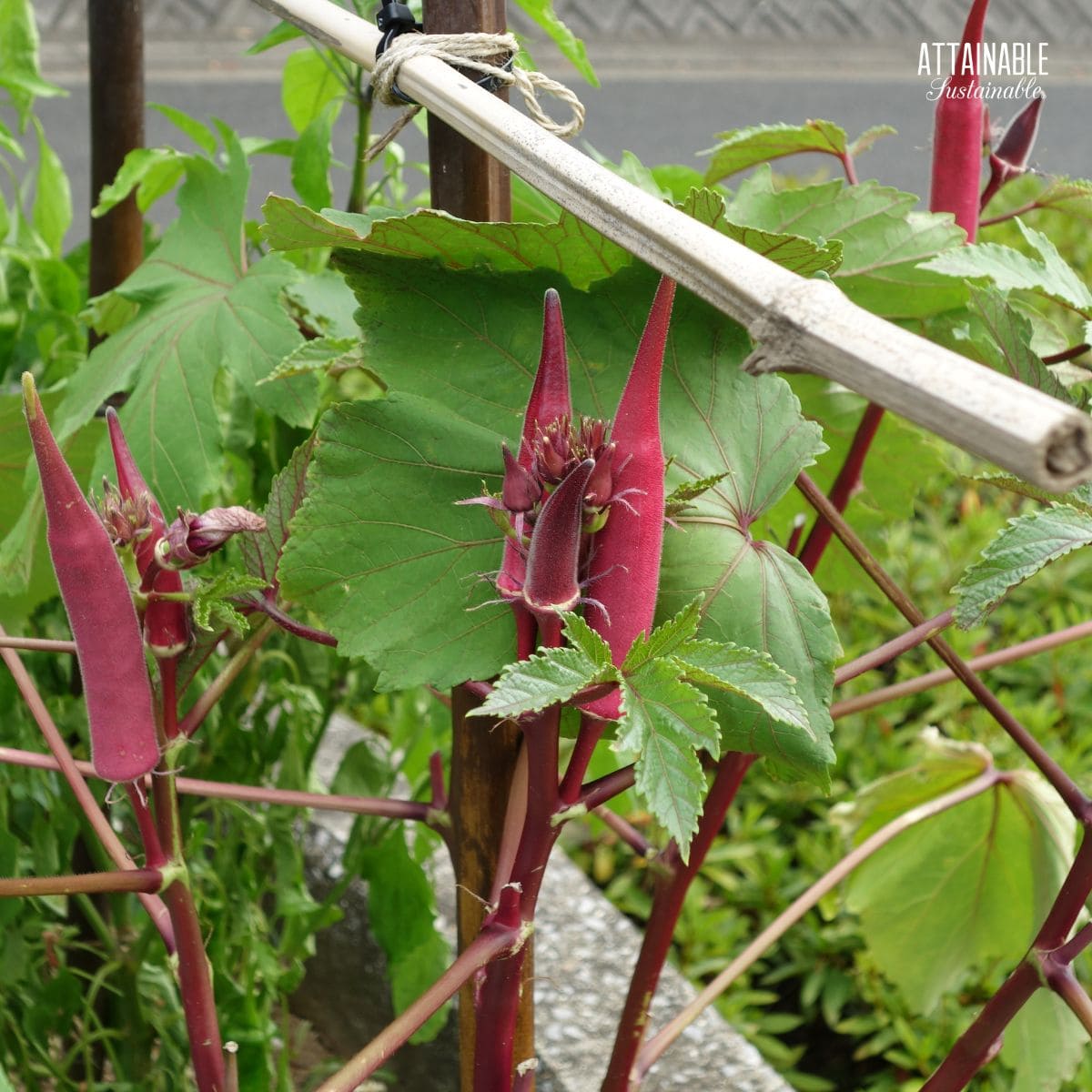
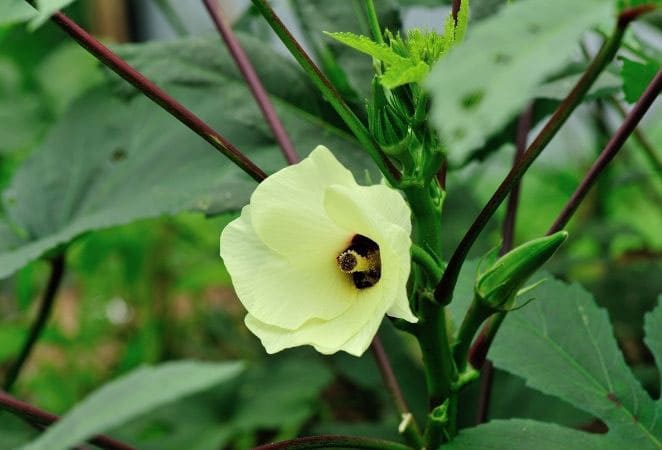


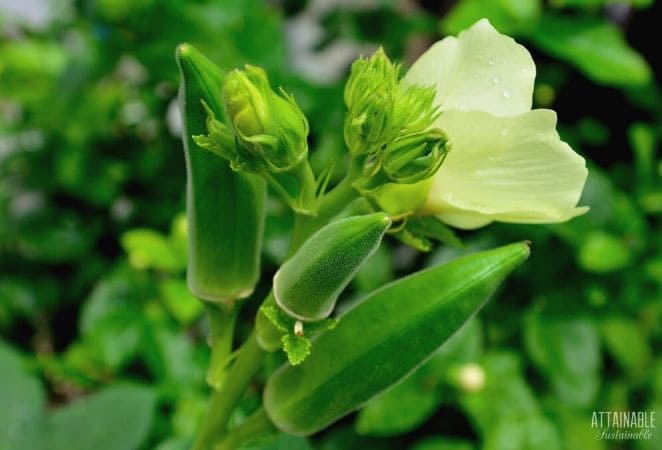
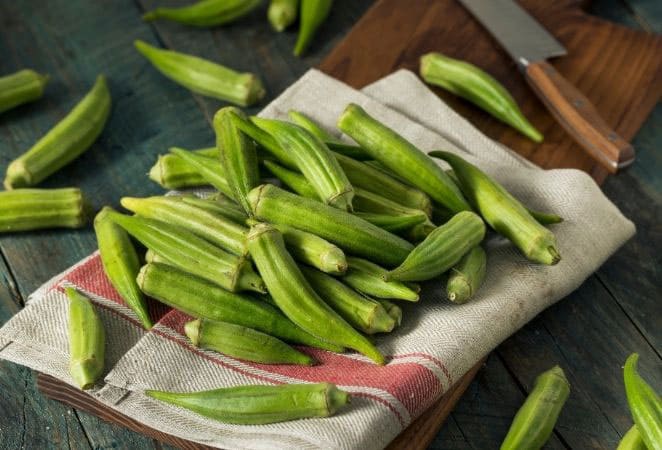
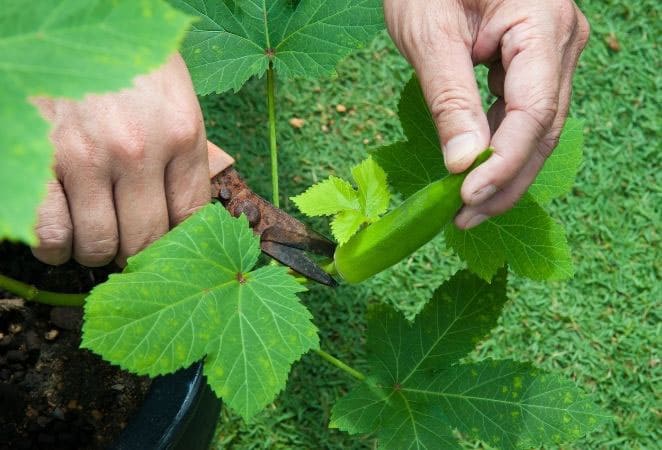
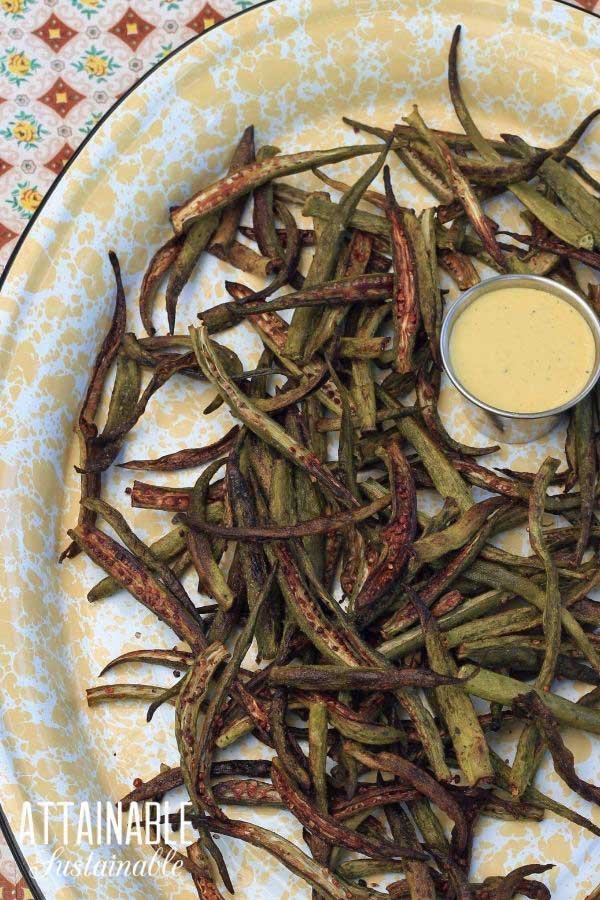





I have grown both green and red. Love them both. Harvest on the smaller side! Once they start, producing check them everyday. In some 6, there are very few pest issues and I direct sow but do soak my seeds overnight before planting. If the okra too big, just dry them for decoration. I love love the flowers, they are beautiful.
Great tips, thanks for sharing!